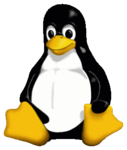Software
digiKam 7.7.0 is released
Submitted by Roy Schestowitz on Monday 27th of June 2022 05:02:30 PM Filed under


After three months of active maintenance and another bug triage, the digiKam team is proud to present version 7.7.0 of its open source digital photo manager. See below the list of most important features coming with this release.
- Login or register to post comments
 Printer-friendly version
Printer-friendly version- Read more
- 13391 reads
 PDF version
PDF version
Digitally signing PDF documents in Linux: with hardware token & Okular
Submitted by Roy Schestowitz on Monday 27th of June 2022 12:13:57 PM Filed under


We are living in 2022. And it is now possible to digitally sign a PDF document using libre software. This is a love letter to libre software projects, and also a manual.
For a long time, one of the challenges in using libre software in ‘enterprise’ environments or working with Government documents is that one will eventually be forced to use a proprietary software that isn’t even available for a libre platform like GNU/Linux. A notorious use-case is digitally signing PDF documents.
Recently, Poppler (the free software library for rendering PDF; used by Evince and Okular) and Okular in particular has gained a lot of improvements in displaying digital signature and actually signing a PDF document digitally (see this, this, this, this, this and this). When the main developer Albert asked for feedback on what important functionality would the community like to see incorporated as part this effort; I had asked if it would be possible to use hardware tokens for digital signature. Turns out, poppler uses nss (Network Security Services, a Mozilla project) for managing the certificates, and if the token is enrolled in NSS database, Okular should be able to just use it.
- Login or register to post comments
 Printer-friendly version
Printer-friendly version- Read more
- 26450 reads
 PDF version
PDF version
Excellent Utilities: Extension Manager - Browse, Install and Manage GNOME Shell Extensions
Submitted by Rianne Schestowitz on Monday 27th of June 2022 09:58:53 AM Filed under

This series highlights best-of-breed utilities. We cover a wide range of utilities including tools that boost your productivity, help you manage your workflow, and lots more besides.
Part 22 of our Linux for Starters series explains how to install GNOME shell extensions using Firefox. Because of a bug, our guide explains that it’s not possible to install the extensions using the Snap version of Firefox. Instead, you need to install the deb package for Firefox (or use a different web browser).
However, if you have updated to Ubuntu 22.04, you’ll find that trying to install Firefox using apt won’t install a .deb version. Instead, it fetches a package that installs the Firefox Snap. You can install a Firefox deb from the Mozilla Team PPA. But there has to be an easier way to install and manage GNOME Shell Extensions.
- Login or register to post comments
 Printer-friendly version
Printer-friendly version- Read more
- 26443 reads
 PDF version
PDF version
Mozilla Firefox 102 Is Now Available for Download, Adds Geoclue Support on Linux
Submitted by Marius Nestor on Monday 27th of June 2022 09:47:14 AM Filed under




Firefox 102 is now here to introduce support for Geoclue on Linux, a D-Bus service that provides geolocation services when needed by certain websites.
It also improves the Picture-in-Picture feature by adding support for subtitles and captions for the Dailymotion, Disney+ Hotstar, Funimation, HBO Max, SonyLIV, and Tubi video streaming services, and further improves the PDF reading mode when using the High Contrast mode.
- 1 comment
 Printer-friendly version
Printer-friendly version- Read more
- 26885 reads
 PDF version
PDF version
Shotcut 22.06 Video Editor Brings Glaxnimate Support, Keyframes Expansion, and More
Submitted by Marius Nestor on Sunday 26th of June 2022 12:44:33 AM Filed under



Two months have passed since the release of Shotcut 22.04, and now users of this powerful video editor have a new update to enjoy. Shotcut 22.06 is here with a big new feature, namely the integration of the Glaxnimate 2D vector drawing and animation program.
In the new Shotcut release, Glaxnimate is bundled within the video editor and lets you apply complex masks to your video clip via the new Mask: Draw (Glaxnimate) video filter. On top of that, there’s also a preview in the Shotcut timeline within Glaxnimate.
- 1 comment
 Printer-friendly version
Printer-friendly version- Read more
- 4892 reads
 PDF version
PDF version
PeaZip 8.7.0
Submitted by Rianne Schestowitz on Saturday 25th of June 2022 06:38:57 PM Filed under

PeaZip is an open source file and archive manager. It's freeware and free of charge for any use. PeaZip can extract most of archive formats both from Windows and Unix worlds, ranging from mainstream 7Z, RAR, TAR and ZIP to experimental ones like PAQ/LPAQ family, currently the most powerful compressor available.
PeaZip provides fast, high compression ratio multi-format archiving - view file compression and decompression benchmarks for more information.
PeaZip is localized in 29 languages and is capable of handling all most popular archive formats (180+ file types), supporting a wide array of advanced file and archive management features (search, bookmarks, thumbnail viewer, find duplicate files and compute hash/checksum value, convert archive files...), especially focused on security (strong encryption, two factor authentication, encrypted password manager, secure file deletion...).
- Login or register to post comments
 Printer-friendly version
Printer-friendly version- Read more
- 4321 reads
 PDF version
PDF version
Best Free and Open Source Alternatives to Adobe Dimension
Submitted by Rianne Schestowitz on Saturday 25th of June 2022 06:34:57 PM Filed under

Adobe Dimension (formerly Project Felix and then Adobe Dimension CC) is a 3D rendering and design software. It’s designed to build brand visualizations, illustrations, product mockups and other creative work.
Adobe Dimension is proprietary software which is not available for Linux. We recommend the best free and open source alternatives.
- Login or register to post comments
 Printer-friendly version
Printer-friendly version- Read more
- 4165 reads
 PDF version
PDF version
Pitivi 2022.06 Open-Source Video Editor Released with Object Tracking and Blurring
Submitted by Marius Nestor on Saturday 25th of June 2022 02:17:49 PM Filed under



Pitivi 2022.06 is here with more new features, including object tracking and blurring, detection of beats and snapping of clips to detected beats, a new Source blending mode, the ability to add border and shadow to the title clip text, as well as a VU meter for sound playback next to the video preview.
On top of that, the Pitivi 2022.06 release introduces support for maintaining the aspect ratio when resizing clips, makes it easier to fade in and fade out a video clip, and lets you cut video clips to paste them at a different position.
- Login or register to post comments
 Printer-friendly version
Printer-friendly version- Read more
- 4647 reads
 PDF version
PDF version
Arti 0.5.0 is released: Robustness and API improvements
Submitted by Roy Schestowitz on Saturday 25th of June 2022 01:45:01 PM Filed under


Arti is our ongoing project to create a working embeddable Tor client in Rust. It’s not ready to replace the main Tor implementation in C, but we believe that it’s the future.
Right now, our focus is on making Arti production-quality, by stress-testing the code, hunting for likely bugs, and adding missing features that we know from experience that users will need. We're going to try not to break backward compatibility too much, but we'll do so when we think it's a good idea.
- Login or register to post comments
 Printer-friendly version
Printer-friendly version- Read more
- 4542 reads
 PDF version
PDF version
5 Top Free and Open Source Erlang Web Frameworks
Submitted by Rianne Schestowitz on Friday 24th of June 2022 11:39:34 PM Filed under

One of the types of software that’s important for a web developer is the web framework. A framework “is a code library that makes a developer’s life easier when building reliable, scalable, and maintainable web applications” by providing reusable code or extensions for common operations. By saving development time, developers can concentrate on application logic rather than mundane elements.
A web framework offers the developer a choice about how to solve a specific problem. By using a framework, a developer lets the framework control portions of their application. While it’s perfectly possible to code a web application without using a framework, it’s more practical to use one.
- Login or register to post comments
 Printer-friendly version
Printer-friendly version- Read more
- 4250 reads
 PDF version
PDF version
More in Tux Machines
- Highlights
- Front Page
- Latest Headlines
- Archive
- Recent comments
- All-Time Popular Stories
- Hot Topics
- New Members
digiKam 7.7.0 is released
After three months of active maintenance and another bug triage, the digiKam team is proud to present version 7.7.0 of its open source digital photo manager. See below the list of most important features coming with this release.
|
Dilution and Misuse of the "Linux" Brand
|
Samsung, Red Hat to Work on Linux Drivers for Future Tech
The metaverse is expected to uproot system design as we know it, and Samsung is one of many hardware vendors re-imagining data center infrastructure in preparation for a parallel 3D world.
Samsung is working on new memory technologies that provide faster bandwidth inside hardware for data to travel between CPUs, storage and other computing resources. The company also announced it was partnering with Red Hat to ensure these technologies have Linux compatibility.
|
today's howtos
|






.svg_.png)
 Content (where original) is available under CC-BY-SA, copyrighted by original author/s.
Content (where original) is available under CC-BY-SA, copyrighted by original author/s.

Recent comments
47 weeks 1 day ago
47 weeks 2 days ago
47 weeks 2 days ago
47 weeks 2 days ago
47 weeks 2 days ago
47 weeks 2 days ago
47 weeks 2 days ago
47 weeks 3 days ago
47 weeks 3 days ago
47 weeks 3 days ago